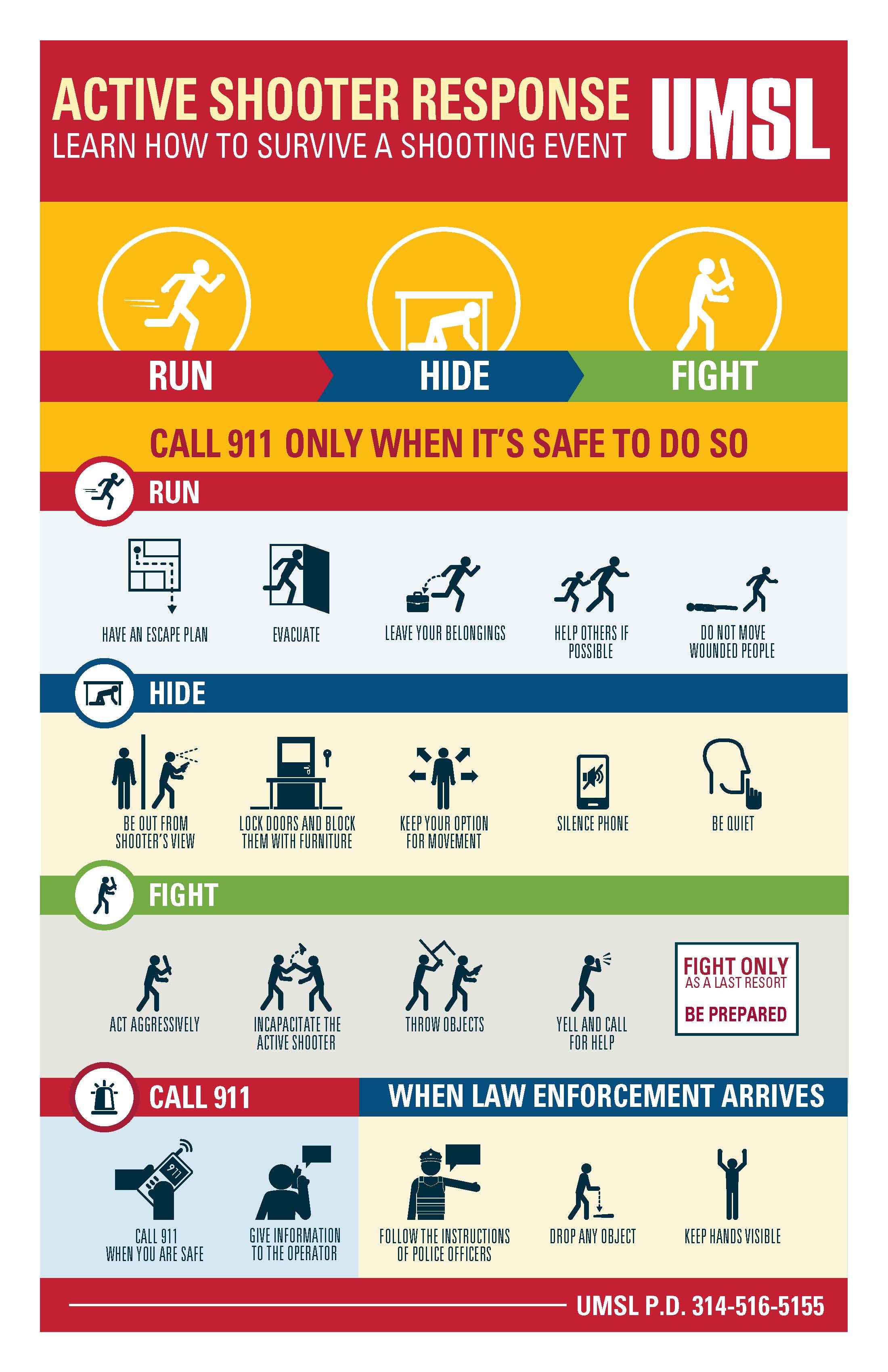Ensuring Public Safety with Advanced Active Shooter Training Approaches
Ensuring Public Safety with Advanced Active Shooter Training Approaches
Blog Article
Executing Energetic Shooter Training: Finest Practices for Creating a Safe and Prepared Area Setting
As areas face the disturbing reality of energetic shooter events, the execution of thorough training programs ends up being imperative. What are the crucial elements that can change a conventional training program into a robust version for neighborhood durability?

Recognizing the Need for Educating
In an era marked by increasing events of violence in public areas, comprehending the need for active shooter training has never ever been much more critical. The occurrence of mass capturings throughout numerous environmentsâEUR" such as institutions, workplaces, and purchasing centersâEUR" highlights the seriousness for people and companies to be prepared for such emergencies. Energetic shooter circumstances can unfold swiftly, leaving little time for people to react efficiently. Thorough training efforts can gear up participants with the understanding and skills to respond decisively.
Furthermore, the psychological effect of violence on individuals and neighborhoods can not be overstated. Training promotes a sense of empowerment and preparedness, allowing people to really feel more secure in their environments. It additionally advertises a culture of safety, where recognition and vigilance become integral parts of day-to-day life. The benefits of active shooter training prolong beyond immediate feedback; they consist of enhancing interaction methods and enhancing general security measures within organizations.
Trick Components of Effective Programs
Efficient energetic shooter training programs incorporate a number of key parts that improve preparedness and reaction capacities. Initially, comprehensive educational program growth is crucial, making certain that training web content is appropriate, evidence-based, and tailored to the particular demands of the company or community. This includes understanding the characteristics of active shooter incidents and the psychological influence on individuals included.
Second, sensible training situations ought to be employed to simulate potential scenarios, enabling individuals to exercise decision-making and feedback strategies in a controlled setting. These drills help with muscular tissue memory and build confidence among individuals.
Third, a focus on communication procedures is critical. Establishing clear lines of communication amongst police, emergency situation responders, and individuals guarantees collaborated actions throughout an event. Normal updates and refresher training courses aid maintain communication pathways clear and reliable.
4th, ongoing examination and feedback systems must be integrated into the training program - active shooter training. Assessing the effectiveness of training with individual responses and performance metrics enables continuous improvement
Lastly, promoting a culture of security and preparedness within the community encourages alertness and aggressive actions, guaranteeing that people are not only skilled yet also involved in preserving a safe atmosphere.
Engaging Area Stakeholders

To efficiently involve these stakeholders, it is important to interact the goals and advantages of the training. Hosting educational sessions can help clarify the training's objective, address worries, and detail the roles each stakeholder may play. Furthermore, creating a stakeholder advising committee can facilitate recurring dialogue, permitting for varied point of views and understandings to be incorporated into the training program.
Structure connections with area he has a good point leaders and organizations is additionally critical. Their assistance can improve outreach initiatives, boost participation, and make certain that training is tailored to the distinct needs of the neighborhood. In addition, stakeholders can help in disseminating details and sources, strengthening the message of security and readiness.
Eventually, involving area stakeholders not just strengthens the training campaign yet also grows a feeling of ownership among citizens, causing a much more resilient and enlightened area capable of responding successfully to prospective dangers.
Training Delivery Approaches
Utilizing a variety of training distribution approaches is important to accommodate the varied discovering designs and demands of individuals in active shooter training programs (active shooter training). Effective training can take a number of forms, consisting of lectures, hands-on simulations, online modules, and interactive workshops. Each approach serves a special objective and can improve the overall learning experience

On-line modules offer versatility and access, enabling participants to discover at their very own pace. These can consist of video clips, quizzes, and discussions to gauge understanding. Interactive workshops encourage seminar and analytical, advertising team effort and interaction skills.
Integrating a combined strategy that integrates these methods not just enriches the training experience yet likewise makes sure that individuals are better prepared to react effectively in the event of an active shooter situation (active shooter training). By dealing with numerous learning choices, companies can produce a more enlightened and receptive community
Continuous Analysis and Enhancement
Regular analysis and enhancement of energetic shooter training programs are important to maintaining their importance and efficiency. As dangers develop, so must the methods and methodologies utilized in training. Constant assessment makes sure that training web content shows the current knowledge on energetic shooter occurrences, incorporating lessons discovered from recent events and readjusting for emerging patterns.
To promote this procedure, organizations need to develop feedback websites mechanisms that include participant assessments, expert evaluations, and case debriefs. Accumulating information on participant efficiency throughout drills and exercises is important, as it highlights locations needing enhancement and educates future training sessions. In addition, involving with police and emergency responders can provide important understandings right into the practicality and applicability of training procedures.
On a regular basis arranged testimonials of training materials and strategies must be mandated, fostering a setting of their explanation technology and flexibility. Organizations should additionally motivate a culture of recurring understanding, where team member feel encouraged to recommend modifications based on their experiences. By dedicating to continuous examination and enhancement, organizations not just boost the efficiency of their energetic shooter training programs but likewise reinforce their overall dedication to safety and security and preparedness within the area.
Conclusion
In conclusion, efficient execution of energetic shooter training demands a comprehensive method that focuses on area interaction and sensible simulations. Ultimately, a commitment to ongoing training and renovation grows a culture of alertness and readiness, making certain a safer environment for all neighborhood members.
Report this page